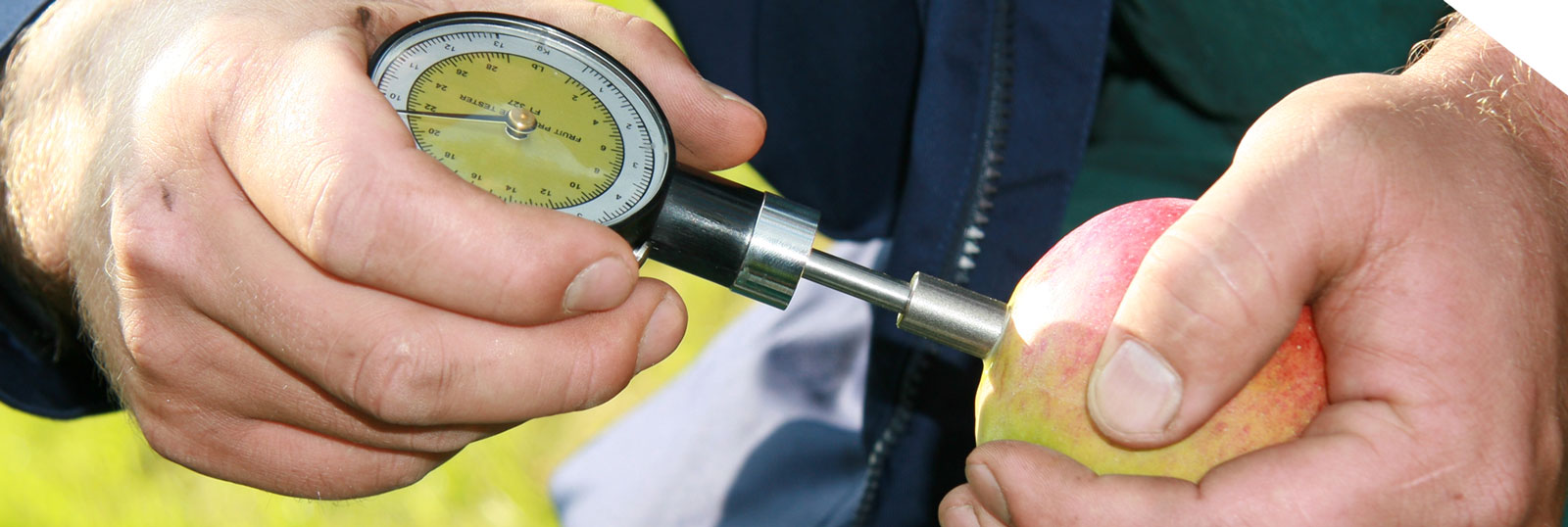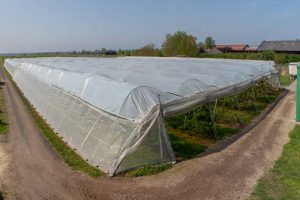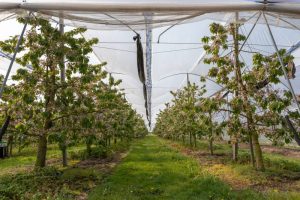
Conditioning
The core competence of the Elbe-Obst is located in the sorting and packaging of the fruit. At 9 sorting stations distributed in the growing area, the receiving and grading of the fruit takes place. The packing in self-service containers is carried out predominantly in the packing house of Elbe-Obst.
Preparation
The sorting facilities only use water basins with emptying functions for bulk bins. The emptying of the crop bulk bins in a water bath for gentle product feed to the sorting machine has been standard for many years in the company. In contrast, the filling of harvesting large crates in the water bath has been used for only a few years.
The sorting is done exclusively with photo optical measurement. In this process, each apple is photographed in high speed from all sides. The photo material will be evaluated by the control unit according to color, size and weight. On the basis of this data the allocation of the apples to which container size is done. The automatic quality reading POWERVISION is also sometimes in use. The hand selection by the sorting staff is mechanically supported. In the hand selection apples are sorted out with visible surface damage to become cider fruit. This activity happens additionally by machine at POWERVISION The sorting process can be executed much faster more accurately and efficiently.
In the packing house the packaging of goods for the customer takes place, i.e. crates, retail packs, Jolly tray, bags and nets. The packing house has an efficient logistics flow, i.e. the emptying of the large harvest boxes, packing lines, packing logistics and palletizing is operated with a high degree of automation. About half of the packing lines fill bags or nets. One quarter of the packaging lines is designed for lying goods and for retail-packs.
Transport
The entire logistics is coordinated by a team of dispatchers. The central warehouses of food chains and industrial processors in Germany and partly in other European countries receive deliveries on a daily basis.
The transport is carried out mainly with our own vehicles. In addition, courier services are also commissioned. In national transport mainly semi-trailers are used. In the regional area road trains are used. The industrial fruit is transported with dump trucks.
Loading
The loading of the fruit to the sorting facilities of the Elbe-Obst takes place at a loading bay or in covered loading halls, so that the fruit remains protected during loading.







 rainfall during the ripening phase. This prevents them from bursting and allows them to ripen fully. The taste of the covered cherries is described to be more intense and juicier. In addition, birds or insects cannot damage the cherries.
rainfall during the ripening phase. This prevents them from bursting and allows them to ripen fully. The taste of the covered cherries is described to be more intense and juicier. In addition, birds or insects cannot damage the cherries. stabilizes the firmness of the pulp in a truly short time. A misting system keeps the humidity in the storage room high so that the stems remain green. They are an important indicator when it comes to identifying the freshness of cherries.
stabilizes the firmness of the pulp in a truly short time. A misting system keeps the humidity in the storage room high so that the stems remain green. They are an important indicator when it comes to identifying the freshness of cherries.